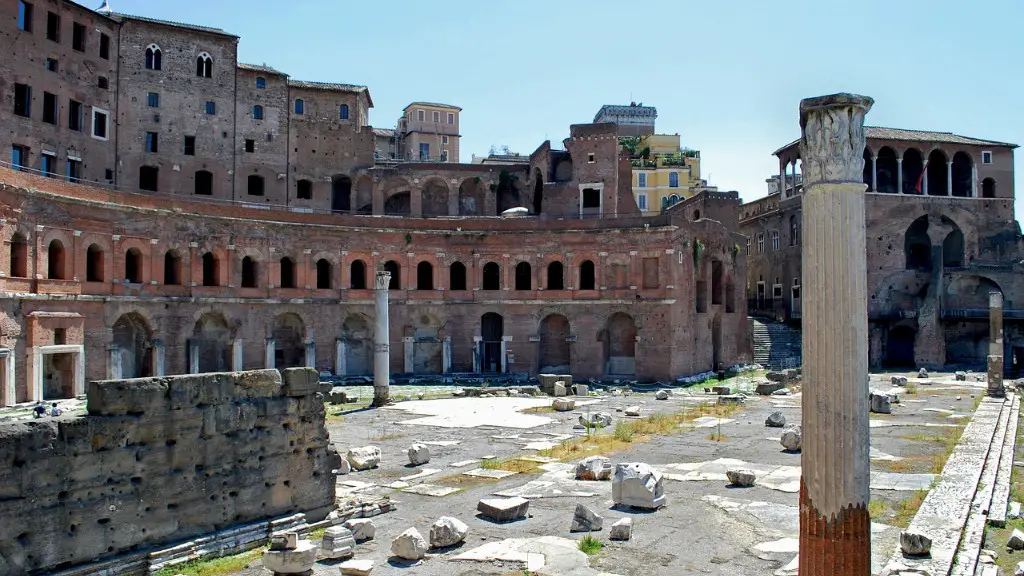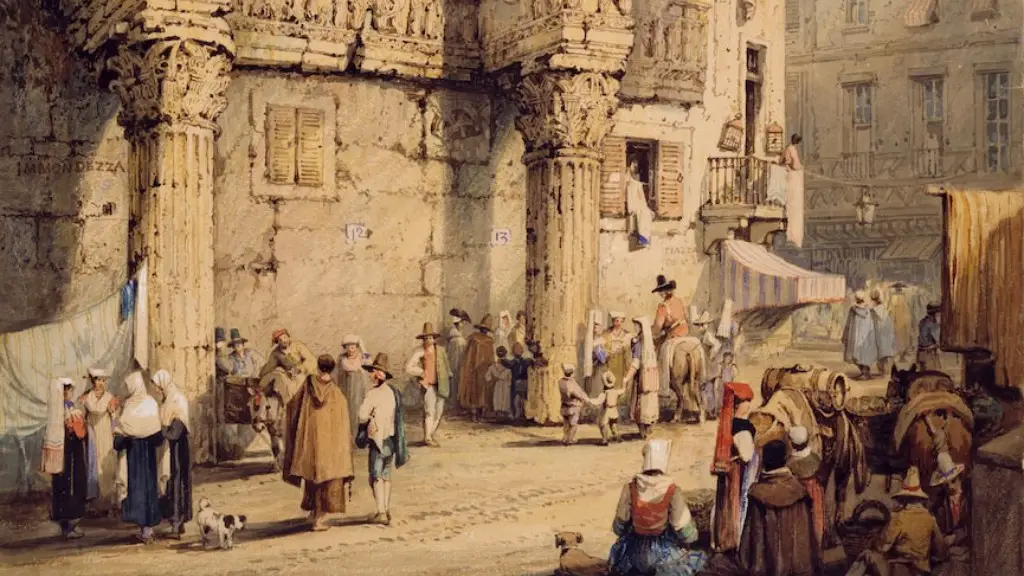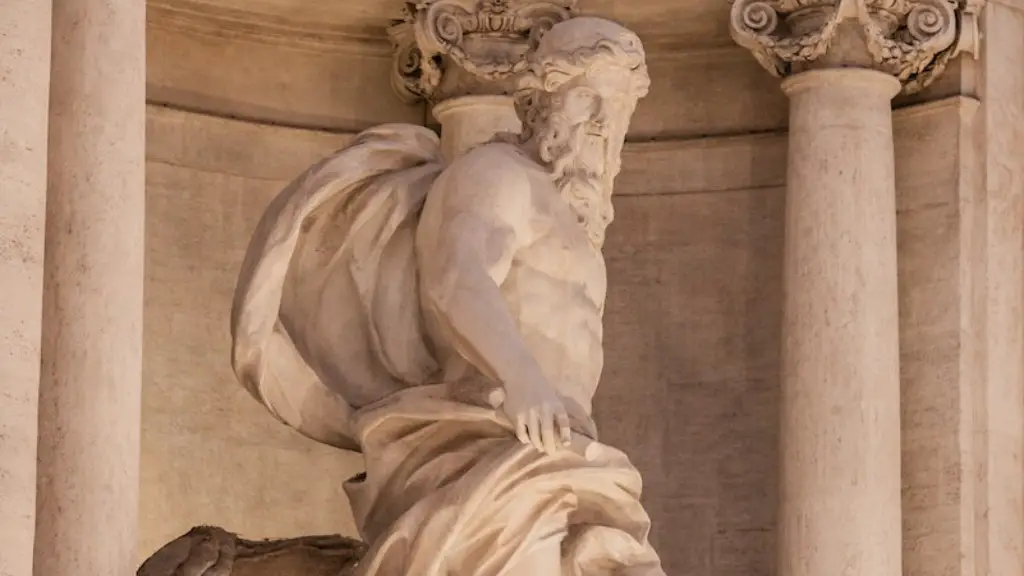Education in ancient Rome was quite different from education today. For wealthy families, boys were taught at home by tutors and girls were taught by their mothers or other female relatives. For poorer families, boys might be sent to school to learn to read and write, while girls were not usually given any formal education. Wealthy families also sent their children to study in Greece, where they could learn more about philosophy and other subjects.
There is not a lot of direct information about education in ancient Rome. Roman children were taught at home by their parents or by tutors until they were old enough to go to school. Boys usually went to school around the age of six or seven and learned to read, write, and do math. Girls were usually taught at home until they got married.
How long was a school day in ancient Rome?
It is amazing to think about how different school was in Roman times compared to now. The school day began at sunrise and finished at sunset with only one break in between. If a student got a question wrong, spoke out of turn, or arrived late to school, they would be beaten with a cane or even whipped. It is hard to imagine such a strict learning environment, but it is clear that the Roman students were very dedicated to their studies.
Ancient Rome had two types of schools – one for children up to 11 or 12 who learned reading, writing and basic mathematics using an abacus. Older children would attend more advanced schools, studying specific topics such as public speaking and writings of the great Roman intellects.
What age did Roman children go to school
The first type of school was for younger children aged up to 11 or 12. At these schools, children learned to read and write and to do basic mathematics. For mathematics, they worked on an abacus. For writing, they used a stylus and a wax tablet.
The empire was a time of great formal education. Established schools served only those who could pay, and very little free public education was available. Both boys and girls were educated, but not always together. This time period was one in which education was highly valued.
What was the purpose of education in Roman?
The wealthier population in Rome would receive a complete education in order to become real citizens. Education aimed to harmonise body, art and soul. In Rome, education is military, patriotic and utilitarian: reading, writing, calculus, military training and of course dedication to the motherland.
Roman schools were small and had only one room. The boys usually sat on stools or chairs. Most of the time only the teacher had a chair with a back. Nobody had a desk.
What age did Roman girls marry?
The legal age of consent for marriage was 12 for girls and 14 for boys during the Roman Empire. Most Roman women married in their late teens to early twenties. Noblewomen, however, often married younger than those of the lower classes. An aristocratic girl was expected to remain a virgin until her first marriage.
Twelve will seem to us undesirably young, and indeed ancient doctors such as Soranus warned against the dangers of women becoming sexually active at so early an age. Most Roman women appear to have married later, from about 15 to 20.
At what age did Roman girls become adults
This is a fascinating topic that I would love to learn more about! From what I understand, girls were considered marriageable at the age of twelve and were thus considered adults. It seems like the legal situation was far less ambiguous for girls than it was for boys. I’m curious to know more about why this may have been the case and what implications it had on girls’ lives.
This is an unfair distinction between boys and girls. Girls should be taught to be physical and to do math and to be warriors just like boys.
Were boys and girls treated the same in Ancient Rome?
Rome did not regard women as equal to men before the law. They received only a basic education, if any at all. They were subject to the authority of a man. Traditionally, this was their father before marriage.
From the ages of 8 until the onset of puberty, children were seen to have more rational minds and were expected to take on responsibility around the home such as taking care of the animals, gathering materials, and general chores around the house. This was believed to be due to the fact that during this time period, children’s bodies were going through less physical changes and they were thus able to think more clearly. In Ancient Rome, the onset of puberty was traditionally seen as 12 years old for girls and 14 years old for boys.
What subjects were taught in ancient Rome
Teachers in ancient Greece taught more than just reading and writing. They also taught math and Greek literature. But the main subject was Oration or public speaking. School started before sunrise with students working using candles or oil lamps.
Moral education was the central element of Roman schooling. Both parents and the state were concerned more with the character of the child as they were with their intellectual prowess and knowledge of culture.
What was the literacy rate in ancient Rome?
Literacy played an important role in the Roman empire, allowing individuals to rise through the ranks. The level of literacy within the empire has been estimated at 15%, but this would have varied enormously according to time and place and individual ability.
The Roman Republic was a period of time in which Rome was governed by a group of elected officials called the Senate. The Senate was made up of two classes of people: the patricians and the plebeians. The patricians were the wealthier class while the plebeians were the working class. The plebeians were not given the same rights as the patricians and this led to conflict between the two classes.
Final Words
Education in ancient Rome was much different than education today. For example, children were taught at home by their parents or by slaves. There were no schools as we know them. wealthy children were tutored by private tutors. sons of wealthy parents were educated in rhetoric and literature so that they could enter politics. Girls from wealthy families were educated at home by their mothers or by slave tutors.
The ancient Romans placed a great deal of importance on education. Schooling in Rome was free and open to both boys and girls. Roman children typically began their education at the age of six. ancient Roman schools were very disciplined and strict. Students were expected to learn by memorization and recitation. The ancient Romans believed that education was the key to a strong and successful society.





